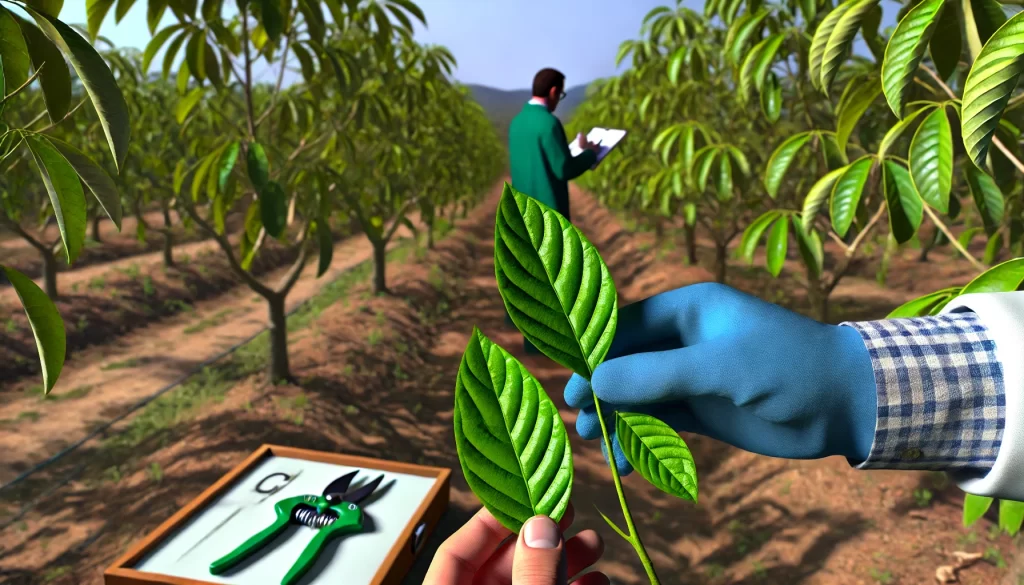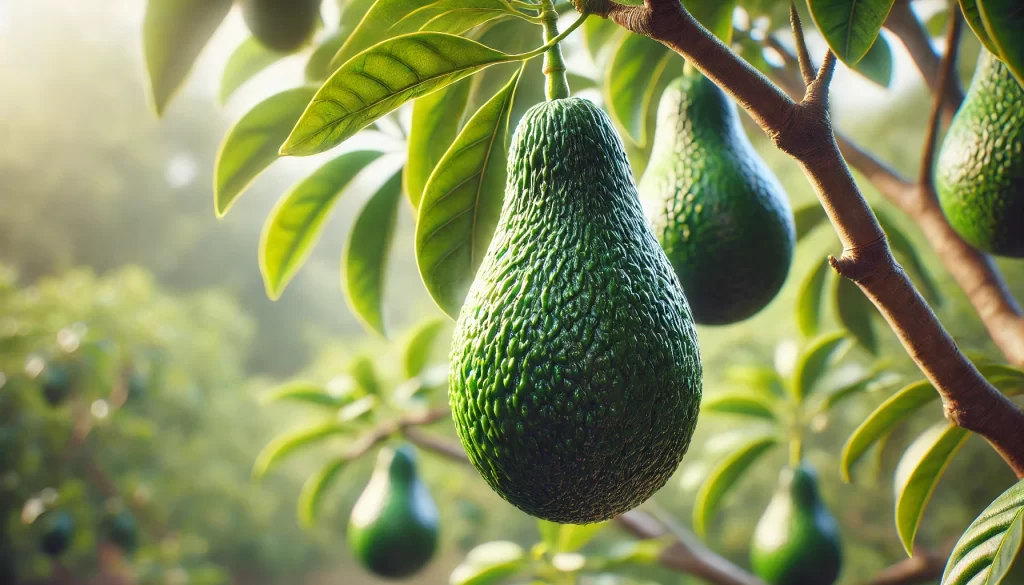Nutrition and fertilization of avocados are critical factors in ensuring vigorous tree growth and optimal fruit production. Proper management of these aspects not only improves avocado quality but also increases crop profitability. Below, we explore the best avocado fertilization practices, supported by examples and real-world cases.

The Importance of Nutrition in Avocados
The avocado is a tree that demands high nutrient levels. To develop a healthy canopy and produce high-quality fruits, it needs a constant supply of macro and micronutrients. Essential nutrients include nitrogen (N), phosphorus (P), potassium (K), calcium (Ca), magnesium (Mg), and zinc (Zn).
Real Case: Avocado Orchard in Michoacán, Mexico
In an avocado orchard in Michoacán, one of the world’s leading avocado-producing regions, farmers noticed a decline in production and fruit quality. After conducting a foliar analysis, a significant deficiency of zinc and magnesium was detected. Farmers adjusted their fertilization program to include applications of zinc sulfate and magnesium sulfate. As a result, production increased by 20% in the following season, and the fruits showed better size and uniformity.

How to Fertilize an Avocado Crop: Practical Guide
The process of avocado fertilization must be strategic and based on the specific needs of the tree during different stages of its life cycle.
Soil and Foliar Analysis: The Starting Point
Before starting any fertilization program, it is essential to perform a soil and foliar analysis. These analyses provide key information about nutrient availability in the soil and the tree’s nutritional status.

Fertilizer Application
- Nitrogen (N): This is one of the most important nutrients for avocado growth. It is recommended to apply nitrogen in several doses throughout the year, starting in the spring when the tree begins to sprout. For example, in an avocado orchard in California, it was observed that split nitrogen applications (4-5 annual applications) significantly improved tree vigor and fruit production.
- Phosphorus (P): Although avocado has a low demand for phosphorus, it is crucial for root development and flowering. In soils with low phosphorus content, it is recommended to apply superphosphate in the planting hole and then periodically during tree growth.
- Potassium (K): Potassium is essential for fruit formation and the tree’s resistance to diseases. A common practice is to apply potassium sulfate to the soil or through fertigation, especially during fruit formation.
- Calcium (Ca): Calcium is vital for fruit quality, especially to prevent “mesocarp hardening,” a problem affecting avocado texture. It is recommended to apply calcium in the form of agricultural lime or gypsum, depending on soil conditions.
- Magnesium (Mg) and Zinc (Zn): These micronutrients, though required in smaller amounts, are essential for photosynthesis and overall tree development. In acidic soils, magnesium deficiency is common, so magnesium sulfate can be applied. Zinc is crucial in areas where avocados show deficiency symptoms, such as chlorosis in young leaves.

Fertigation: Precise Nutrition
Fertigation is a technique that allows nutrients dissolved in irrigation water to be applied, providing more precise and efficient nutrition. In a study conducted in an avocado orchard in Israel, it was observed that fertigation with nitrogen and potassium increased productivity by 30% compared to traditional solid fertilizer application.
Examples of Avocado Fertilization Programs
Below is an example of a fertilization program used in an avocado orchard in Spain, adapted for neutral pH soils with low organic matter:
- Spring (March – May):
- 50 kg/ha of nitrogen (N) in the form of ammonium nitrate.
- 20 kg/ha of potassium (K) in the form of potassium sulfate.
- 5 kg/ha of zinc (Zn) in the form of zinc chelate.
- Summer (June – August):
- 30 kg/ha of nitrogen (N) in the form of urea.
- 20 kg/ha of potassium (K).
- 10 kg/ha of calcium (Ca) in the form of agricultural gypsum.
- Autumn (September – November):
- 40 kg/ha of nitrogen (N).
- 20 kg/ha of phosphorus (P) in the form of superphosphate.
- 15 kg/ha of magnesium (Mg) in the form of magnesium sulfate.

Real Case: Implementing a Fertilization Program in Peru
In an avocado orchard in Peru, farmers implemented a fertilization program similar to the one mentioned above. After two years, they observed a 25% increase in fruit production, along with an improvement in avocado size and quality. This success was attributed to adapting the fertilization program to the specific needs of the crop and continuously monitoring nutrients through foliar analyses.
 AgronoBlog – Agriculture Blog
AgronoBlog – Agriculture Blog 


